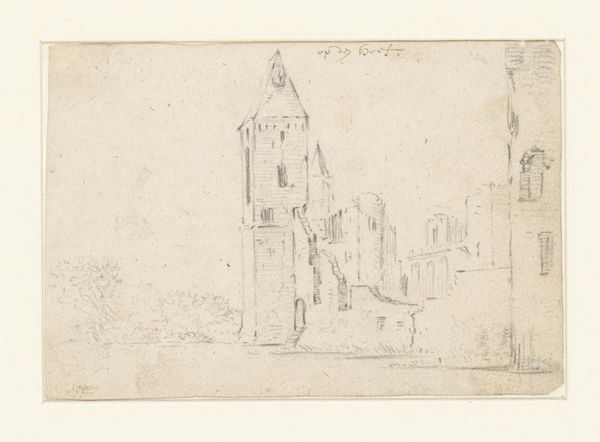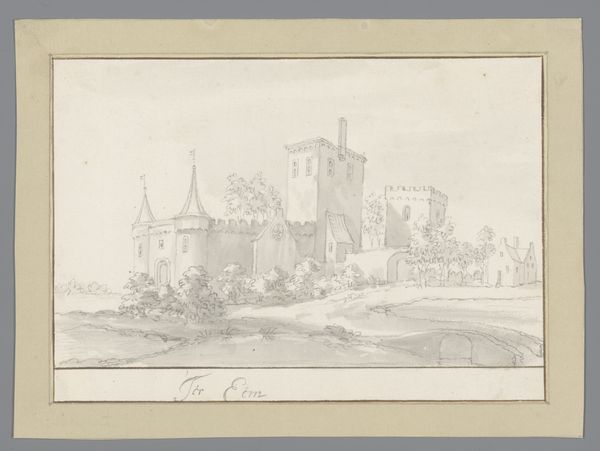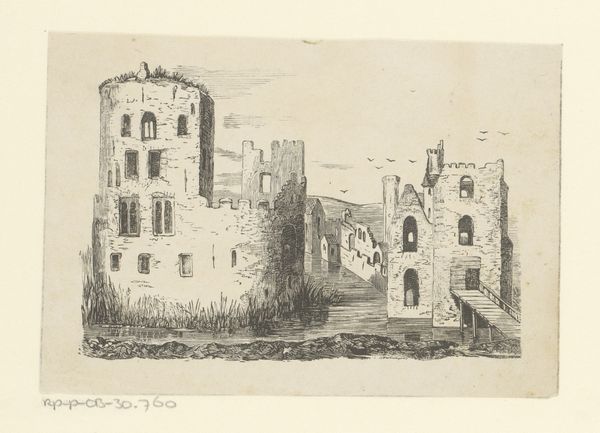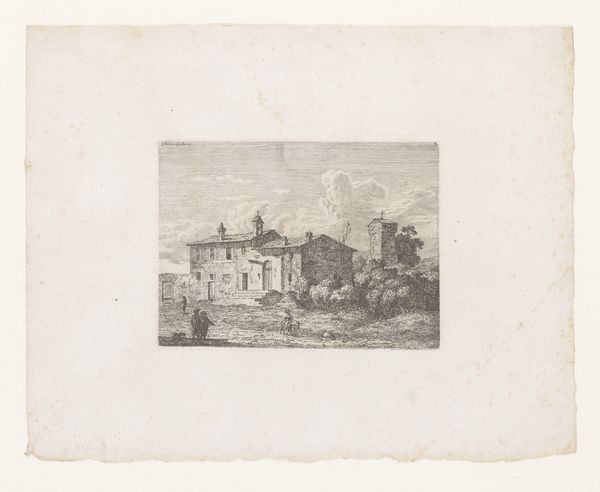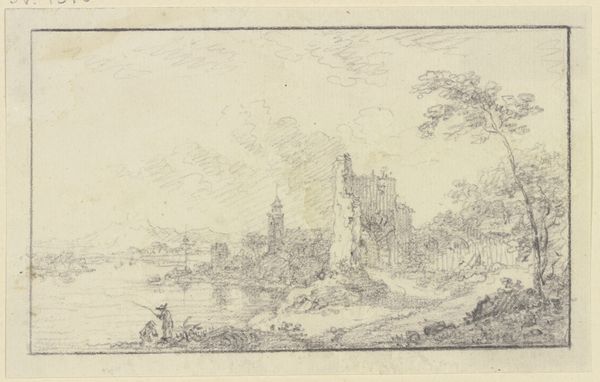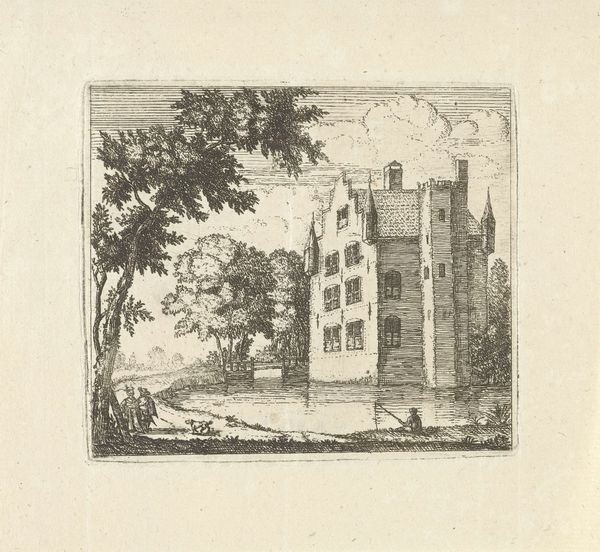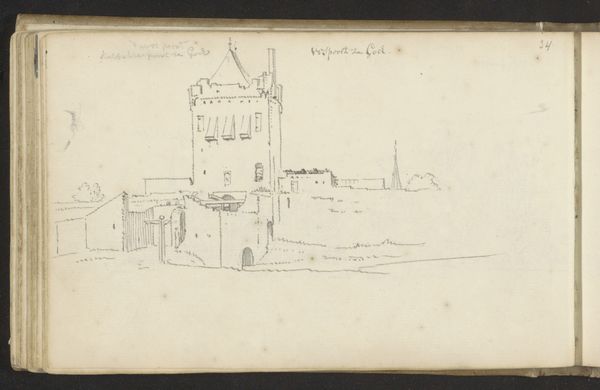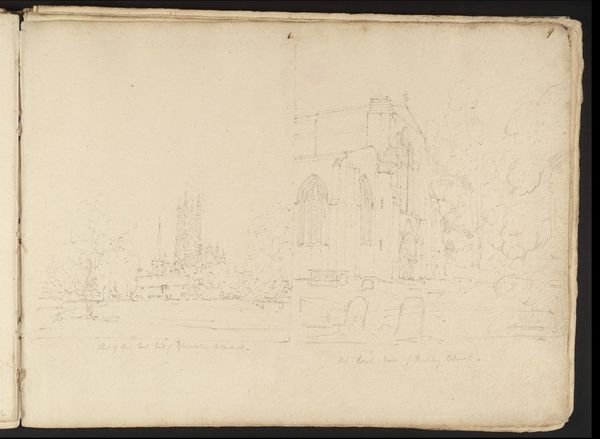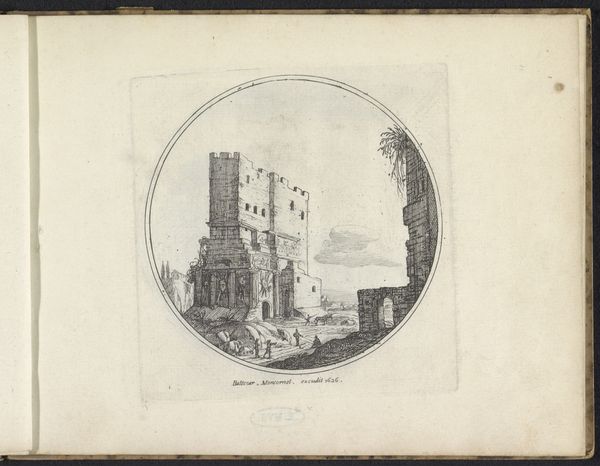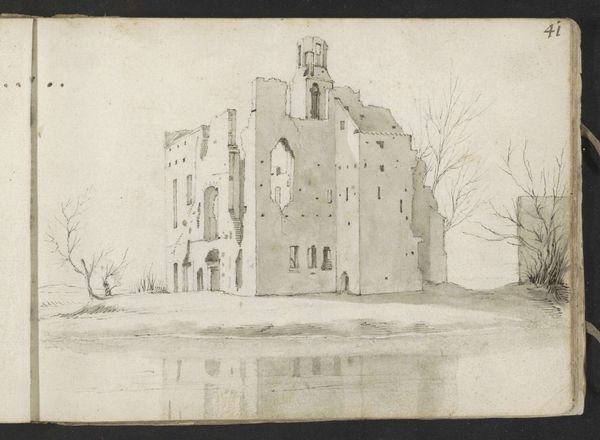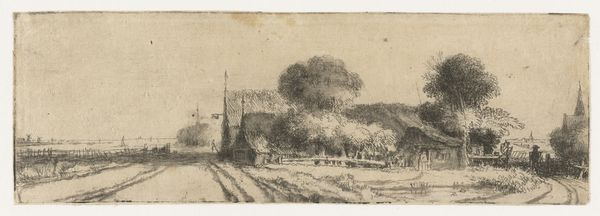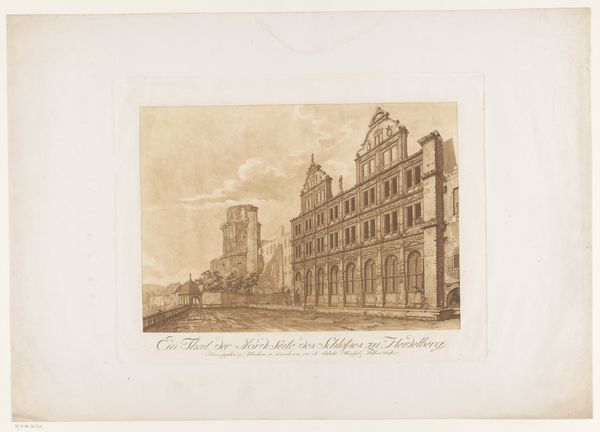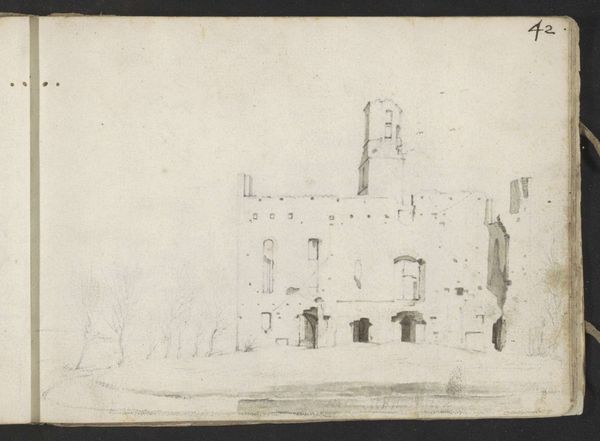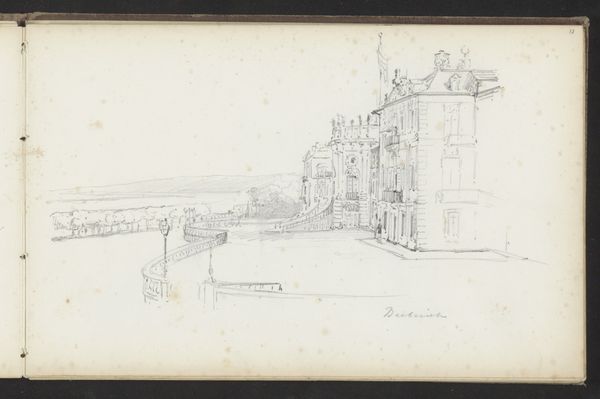
drawing, paper, pencil
#
drawing
#
baroque
#
landscape
#
paper
#
pencil
#
cityscape
#
realism
Dimensions: height 100 mm, width 145 mm
Copyright: Rijks Museum: Open Domain
Curator: Salomon van Ruysdael created this pencil drawing on paper titled *Ruïne van het Kasteel Egmond of Slot op den Hoef* sometime between 1630 and 1670. Editor: Immediately, I'm struck by its delicate lines and rather mournful, nostalgic feel. The muted gray of the pencil captures this perfectly, almost like a fading memory. Curator: Indeed. Ruins in art often function as a memento mori, reminders of mortality and the transience of power. Considering the Dutch Republic’s rise during this period, the ruined castle could symbolize a shift away from feudalism. Editor: Interesting. For me, it's the artist's precise yet free handling of the pencil that fascinates. Look at the way the textures vary between the solidity of the stonework, defined through linear contour, and the soft, almost atmospheric rendering of the surrounding trees. Curator: And perhaps that blurring between decay and nature emphasizes the constant interplay between civilization and wilderness, echoing broader themes of life cycles within Dutch landscape painting. It's also worth considering Egmond Castle's history. It was destroyed during the Eighty Years' War, so it may well carry the weight of religious and political struggle for the Dutch. Editor: Yes, a tangible reference to historical rupture, perhaps a somber warning about the fragility of political structures made visible. Technically, I am also noticing how Ruysdael establishes a rhythmic scaffolding within the work as one shape repeats others, creating this visual consistency we respond to. Curator: And that would have certainly been intentional. The very act of representing this ruin turns it into a sign, layering it with collective and cultural meaning. A monument transformed from a symbol of power into a meditation on impermanence. Editor: I agree. Van Ruysdael’s command of form, coupled with his attention to symbolic cues, generates an object of stark resonance. Curator: It reminds us how images not only reflect but also shape our understanding of time, history, and cultural identity.
Comments
No comments
Be the first to comment and join the conversation on the ultimate creative platform.
